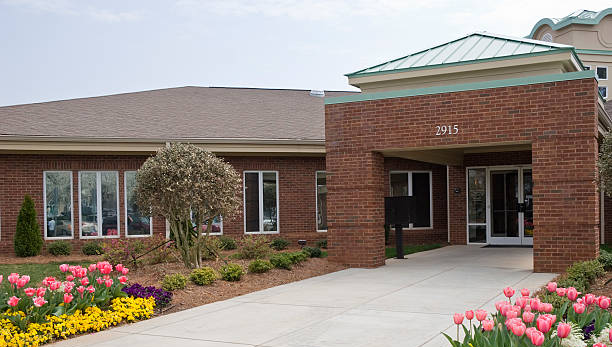Live Session
A Roadmap for Change Management Projects
Register Now
Group
Family Medicine Residency Program
Specialty
Multi-Specialty
Implemented Solution
PerfectServe Lightning Bolt Scheduling
TABLE OF CONTENTS
A medical center in Southern California founded a training program in 2018 for residents across multiple specialties. As a part of this program, residents provide care to patients in continuity clinics at a neighboring organization for a week at a time. Though this enhances the learning experience for residents, it adds complexity to the schedule.

The medical director and program schedule team manually created four-week rotation schedules for 19 residents and 16 medical assistants while both trying to accommodate resident preferences and also comply with ACGME requirements. This Excel-based process often led to inconsistent shifts, unbalanced workloads, and scheduling challenges when last-minute changes were needed.
In addition to rotation and call shifts, the continuity clinic shifts proved challenging to manage. Ideally, three residents would be scheduled for each continuity clinic shift with a preceptor, but this wasn’t easy to achieve with the manual workflow and often left only one resident assigned per shift.
With new ACGME elective guidelines in place, the director aimed to switch from four-week to two-week rotations to enhance resident learning. He knew this rotation change would be difficult to build within Excel and would be all the more time-consuming. Facing these challenges, he determined that the residency program needed an automated scheduling tool to implement these changes more effectively.
The medical director needed an automated physician scheduling solution to create fair and optimized schedules that align with ACGME requirements. By implementing PerfectServe’s Lightning Bolt Scheduling, the director successfully transitioned to two-week rotations, ensuring compliance with ACGME guidelines while improving resident utilization. This automation has lightened the director’s workload and enhanced the residency experience for residents.

1
Automation & Optimization
Previously, the director managed multiple Excel spreadsheets to build the Annual Block, Director Rotation, continuity clinic shift, and Daily schedules—each on a different timeline. This approach created a fragmented, non-transparent process that made it difficult to see residents’ full schedules beyond continuity clinic shifts.
With Lightning Bolt, all rotations are now scheduled in advance with real-time visibility, allowing faculty to see each resident’s full schedule. Automated rules keep the schedule accurate and adaptable, making Lightning Bolt the single source of truth for the entire team.
2
Improved Staff Utilization
Scheduling used to be a time-intensive, manual task, particularly for continuity clinic shifts, where availability was often limited to just a single resident per shift. While the team was optimistic about automation, they worried that the complex requirements of their schedule might be too intricate for any software to manage.
With Lightning Bolt’s algorithm and support from a dedicated consultant, three to six residents are now consistently scheduled per continuity clinic shift, leading to more balanced workloads that have a positive impact on both patient and resident experiences.
3
Time Savings
Before Lightning Bolt, the program director’s assistant spent most of her time managing resident requests and keeping everything in line with ACGME requirements. She was “overworked and always scrambling.” Now, scheduling time has been reduced by 18 hours each month, freeing her up for other essential tasks and duties.
As with any residency, new residents join the program every year. Previously, candidate interviews were scheduled in somewhat of an ad hoc fashion that caused confusion. Now, Lightning Bolt integrates interview times into the schedule in advance, saving time and allowing both residents and faculty to prepare more effectively.
4
Rotation Adjustments for Graduation Credit Management
Because ACGME increased the required number of electives, the previous four-week rotation schedule needed to change for residents to graduate on time. The director wanted the elective rotation schedule to be conducive to an efficient and comfortable learning experience for residents, and a two-week schedule was simply going to be a better fit.
Lightning Bolt enabled this transition by creating balanced schedules that align with the new parameters. This approach ensures residents receive equitable schedules with shifts that fulfill all graduation requirements.
5
Provider Preferences and Accommodation
Lightning Bolt accommodates unexpected changes in resident availability (e.g., maternity leave) and enables quick schedule adjustments within minutes. This flexibility keeps schedules balanced and up to date, offering residents greater peace of mind.
The auto-generation feature even helps to reincorporate residents who are returning from leave in a way that doesn’t overburden them. The director expressed notable appreciation for Lightning Bolt’s ability to account for these sudden changes in a resident’s ability to work.
6
Generating Reports
Before Lightning Bolt, tracking shift equalization among residents was nearly impossible, and manual scheduling made it too time-consuming to optimize.
Now, Lightning Bolt’s detailed reports provide clear visibility into shift distribution, allowing the director to track shifts worked, clinic balance, and resident hours. These reports also help ensure residents meet accreditation requirements as they advance in their training.
A key benefit of Lightning Bolt is its scalability across teams of any size. When the residency program expanded from six to eight residents, the system seamlessly integrated them into rotations. As needs change, the team can collaborate with their technical consultant to refine the system even further.
Coordinating a residency program involves scheduling more than just residents. The director plans to use Lightning Bolt to schedule additional roles, such as pairing preceptors with residents on continuity clinic shifts. Over time, Lightning Bolt will become the single source of scheduling truth for not just the entire team, but the entire organization.

Scheduling technology can simplify the management of complex accreditation and organizational requirements for residency programs. With Lightning Bolt, this program can seamlessly adjust rotations to meet evolving needs and preferences while staying aligned with organizational standards.
The newfound capabilities of schedule optimization have also made issues with continuity clinic shift allocation a thing of the past—Lightning Bolt now ensures an adequate number of residents are always available in continuity clinics. From happier schedulers and providers to improved shift equity and patient care continuity, Lightning Bolt has changed scheduling workflows for the better.